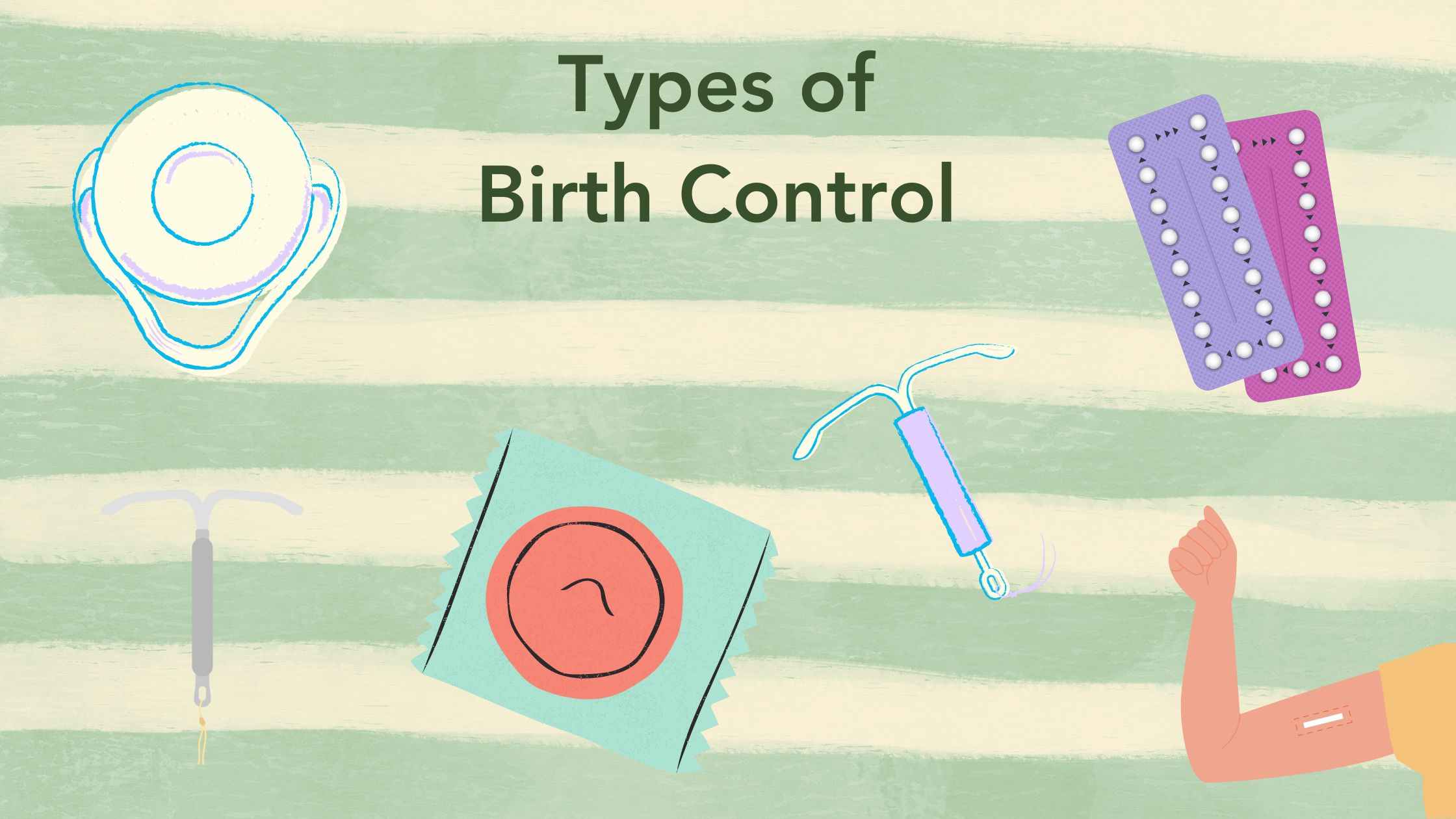No, generally, you do not get pregnant or ovulate on the birth control pill.
Birth control pills, often called “the pill,” contains hormones that stop you from ovulating. Without ovulation, there is no egg released from the ovaries. If there is no egg for the sperm to fertilize, pregnancy cannot happen.
Proper usage of birth control pills is crucial in preventing ovulation. By understanding how each type of pill works, you can gain better insight into their impact on your fertility.
This article explores the effects of various type of birth control pills on ovulation.
What Is Ovulation?
Ovulation is the phase within the menstrual cycle where a mature egg is released from one of the ovaries. This usually happens in the middle of regular menstrual cycles, around the 14th day if you have a typical 28-day cycle, but it could vary from person to person.
Your body prepares for this by releasing two hormones, follicle-stimulating hormone (FSH) and luteinizing hormone (LH). FSH prepares your eggs, and LH tells your ovary to release a mature egg.
After the egg is released, it moves down the fallopian tube, which connects your ovary to your uterus. The egg then waits for up to 24 hours to be fertilized by the sperm.
If the sperm meets the egg at this time, they can join together and move to the lining of your uterus, where they stick and start to grow into a baby. If the egg doesn’t meet the sperm, it leaves your body during your next period.
What Is Birth Control?
There are many birth control methods, and all work to prevent sperm from fertilizing an egg.
Birth control, or contraception, uses surgery, devices, or medicines to prevent pregnancy.

There are several types of birth control, each working in different ways. Some methods are non-hormonal (barrier methods), which physically prevent sperm from entering the woman’s body. They include:
- Male condoms
- Female condoms
- A contraceptive sponge is inserted into the vagina to cover the cervix and contains spermicide to kill sperm.
- Spermicide – A substance that can kill sperm cells and is available in foam, jelly, cream, suppository, or film form. It is inserted into the vagina near the uterus and can be used alone or in combination with a diaphragm or cervical cap.
- Diaphragm and cervical cap – A silicone or rubber cervical cap is placed by a doctor inside the vagina to cover the cervix and is often used with spermicide.
Other methods include hormonal interventions like:
- Implant – A contraceptive implant is a small, flexible rod inserted under the upper arm’s skin. It releases a steady, low dose of progestin hormone into the bloodstream to prevent pregnancy.
- Injectable birth control – A hormone shot that women receive every three months.
- Vaginal ring – A thin, flexible ring that is inserted into the vagina. It releases hormones continuously for three weeks and then is removed for the fourth week before inserting a new one.
- Contraceptive patch – A weekly patch that a woman applies to her skin. It releases hormones directly into the bloodstream.
- Intrauterine device (IUD) – An IUD is a small, T-shaped device put into the uterus. It can last between 3 to 10 years and comes in two types: hormonal IUDs and copper IUDs.
- Oral contraceptives (birth control pill) – The pill is one type of hormonal birth control that prevent ovulation and make it harder for sperm to reach matured eggs by thickening the mucus around the cervix. There are two types of birth control pills:
- Combination pills that contain estrogen and progestin
- progestin-only pills
Permanent methods of birth control include surgical procedures such as tubal ligation for women and vasectomy for men.
You should choose a method that fits your lifestyle, health conditions, future pregnancy plans, and comfort level. Effectiveness, side effects, frequency of sexual activity, protection against STIs, and privacy are all factors to consider when choosing a birth control method.
Birth Control and Pregnancy Prevention
Contraceptives are designed to prevent pregnancy through the following three main methods:
- preventing sperm from reaching the eggs
- stopping the release of eggs from the ovaries
- preventing sperm from leaving the body
The choice of birth control you opt for depends on factors such as your health, sexual activity, and plans for having children. It is important to consult a doctor to determine the most suitable form of contraception for your personal needs.
For instance, sterilization is a highly effective way to prevent pregnancy, but it’s permanent.
If you’re considering having children later, other options, such as the pill or an IUD, might suit you better.
How Does the Pill Prevent Pregnancy?
Taking birth control pills regularly causes hormonal changes in your body, mainly by restricting ovulation. Although pregnancy is possible at any stage of the menstrual cycle, the likelihood of conception is particularly high before and during ovulation.
Preventing ovulation is just one of the main ways birth control pills prevent fertilization from happening. They work to prevent pregnancy in the following different ways:
Preventing Ovulation
Most birth control pills contain two synthetic versions of naturally occurring hormones in the body: estrogen and progestin. These hormones work together to prevent the ovaries from releasing an egg during the menstrual cycle. No egg means there’s nothing for sperm to fertilize, which prevents pregnancy.
Thickening of Cervical Mucus
The progestin in the pill also makes the mucus at the cervix thicker. This makes it harder for sperm to swim through and reach an egg if one is released.
Changing the Lining of the Uterus
The hormones in the pill can also thin the lining of the uterus (the endometrium). This makes it less likely for a fertilized egg to attach to the uterus and start a pregnancy.
Remember, while a birth control pill prevents pregnancy when used correctly, it does not protect against sexually transmitted infections (STIs).
Combination Birth Control Pills and Ovulation

At the start of the cycle, the hypothalamus releases a hormone called GNrH. This hormone tells the pituitary gland to produce two other hormones, follicle-stimulating hormone (FSH) and luteinizing hormone (LH).
FSH and LH then move into the ovaries through the blood. Here, FSH prompts the ovaries to prepare a mature egg and raise the amount of estrogen. This estrogen boost thickens the uterus lining to prepare a fertilized egg to implant itself in the uterus. LH causes the egg to be released, a process known as ovulation.
Meanwhile, the mucus in the cervix becomes thinner, making it easier for sperm to pass through.
Combination birth control pills have two hormones, estrogen, and progestin (a synthetic form of progesterone).
Usually, when you’re not taking these pills, the amounts of estrogen and progesterone in your body rise and fall during your menstrual cycle. When you take combination birth control pills, your hormone levels stay steady through your cycle. This sends a message to the pituitary gland that there’s no need for it to trigger the release of an egg.
According to Harvard Health, estrogen in the pill helps prevent ovulation by blocking the pituitary gland from releasing FSH and LH.Without FSH, the ovaries can’t start making a mature egg.
Also, the progestin in the birth control pill blocks a significant release of LH from the pituitary gland. Usually, LH would signal the ovary to release the egg. So, no LH surge means no ovulation.
Progestin-Only Birth Control Pills and Ovulation
Progestin-only birth control pills, often called mini-pill, work primarily by thickening the cervical mucus and thinning the lining of the uterus. The former obstructs the sperm’s journey to the egg, while the latter prevents a fertilized egg from implanting in the womb.
The mini-pill may also suppress ovulation, although this does not happen in all women taking the pill.
To be effective, this pill should be taken at about the same time every day within a 3-hour timeframe.
Remember that the mini-pill is less effective in preventing pregnancy than the combination pill, with up to 13 in 100 women on the mini-pill becoming pregnant. In comparison, approximately 9 in 100 women who used the combination pill had an unintended pregnancy.
Can You Ovulate on a Birth Control Pill?
Combination birth control pills with estrogen and progestin usually prevent the release of an egg, stopping ovulation. The mini-pill, containing only progestin, might suppress ovulation, but it’s less consistent, and ovulation may still occur.
If remembering to take a pill daily is challenging, neither option may suit you. It’s best to consult your doctor about other contraceptive choices.
When You Might Ovulate on a Birth Control Pill
The effectiveness of the pill depends on the following:
- If it is taken at the same time each day
- Any other drugs or supplements you may be taking
- Some health issues that could disrupt its function
Remember, the pill doesn’t prevent sexually transmitted diseases, so using barrier methods like condoms is necessary for that protection.
Takeaway
- Ovulation is the release of a mature egg around the 14th day of a 28-day cycle, controlled by hormones FSH and LH.
- Birth control methods include non-hormonal options (e.g., condoms), hormonal interventions (e.g., implants), and permanent surgical procedures.
- Contraceptives work by preventing sperm from reaching eggs, stopping egg release, or blocking sperm exit.
- The pill is one method of hormonal birth control that prevents pregnancy. Birth control pills prevent ovulation, thicken cervical mucus, and change uterine lining but don’t protect against STIs.
- Combination pills use estrogen and progestin to block egg release, while progestin-only pills may suppress ovulation less consistently.
- Birth control pills work if they are taken on time every day.
- Barrier methods like condoms are necessary for STI protection.
References
Cleveland Clinic. (n.d.). Ovulation: Calculating, Timeline, Pain & Other Symptoms. Retrieved July 29, 2023, from https://my.clevelandclinic.org/health/articles/23439-ovulationCleveland Clinic. (n.d.). Birth Control Options. Retrieved July 29, 2023, from https://my.clevelandclinic.org/health/articles/11427-birth-control-optionsJohns Hopkins Medicine. (n.d.). Menstrual Cycle: An Overview. Retrieved July 29, 2023, from https://www.hopkinsmedicine.org/health/wellness-and-prevention/menstrual-cycle-an-overviewNational Library of Medicine. (n.d.). Birth Control. MedlinePlus. Retrieved August 4, 2023, from https://medlineplus.gov/birthcontrol.htmlCooper DB, Patel P, Mahdy H. Oral Contraceptive Pills. [Updated 2022 Nov 24]. In: StatPearls [Internet]. Treasure Island (FL): StatPearls Publishing; 2023 Jan-. Available from: https://www.ncbi.nlm.nih.gov/books/NBK430882/Mayo Clinic. (n.d). Combination birth control pills. Retrieved August 4, 2023 from https://www.mayoclinic.org/tests-procedures/combination-birth-control-pills/about/pac-20385282U.S. National Library of Medicine, MedlinePlus. Birth control pills - overview. Reviewed January 14, 2018.Mayo Clinic. (n.d). Minipill (progestin-only birth control pill). Retrieved August 4, 2023 from https://www.mayoclinic.org/tests-procedures/combination-birth-control-pills/about/pac-20385282
